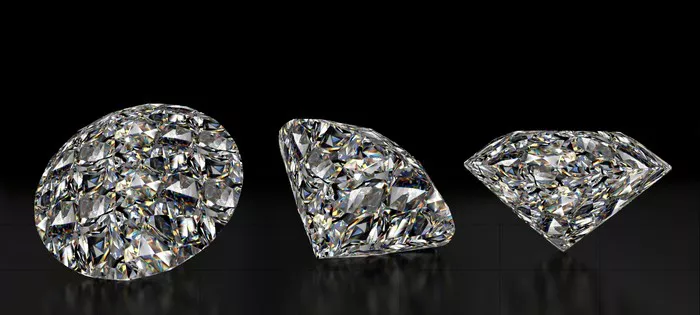In the realm of precious gemstones, few captivate the imagination and desire quite like diamonds. Revered for their brilliance, rarity, and enduring allure, diamonds hold a special place in the world of jewelry and beyond. However, with the proliferation of synthetic and imitation stones, distinguishing between a genuine diamond and its counterfeit counterparts has become increasingly important. Fortunately, there are several straightforward methods anyone can employ to ascertain the authenticity of a diamond, offering peace of mind and ensuring that investment sparkles brightly. Among these tests are the Dot Test, Water Test, Fog Test, examination of the setting and mount, and a comparison of sparkle. Let’s delve into each of these methods to uncover the secrets of genuine diamonds.
The Dot Test: A Simple Indicator of Authenticity
One of the most accessible and reliable methods for determining diamond authenticity is the Dot Test. This test requires nothing more than a white piece of paper and a pen. To perform the Dot Test, place the diamond face down on the paper and draw a small dot with the pen. If the diamond is real, no visible circular reflection will appear within the stone. Conversely, if a circular reflection is visible, it’s likely a fake. This phenomenon occurs because diamonds have a high refractive index, meaning light passes through them differently than it does through other materials. The absence of a visible dot reflection indicates that the diamond is refracting light internally, a characteristic unique to genuine diamonds.
The Water Test: Gauging Density for Authenticity
Another effective method for distinguishing real diamonds from impostors is the Water Test. Diamonds are exceptionally dense, so they sink when submerged in water, while many fakes do not. To conduct the Water Test, fill a glass with water and carefully drop the diamond into it. If the diamond sinks to the bottom, it’s likely real. Conversely, if it floats or remains at the surface, it’s probably fake. This test exploits the disparity in density between diamonds and most other materials used to simulate them. By observing how the diamond interacts with water, one can gain valuable insight into its authenticity.
The Fog Test: Assessing Thermal Conductivity
The Fog Test is a simple yet insightful means of determining diamond authenticity based on its thermal conductivity. Diamonds disperse heat rapidly, so when you breathe on a real diamond, any fog or condensation that forms will dissipate almost instantly. In contrast, synthetic diamonds and other imitations tend to retain heat, causing the fog to linger on the surface. To perform the Fog Test, hold the diamond close to your mouth and exhale onto it to create condensation. If the fog disperses quickly, the diamond is likely real. If it lingers or takes longer to dissipate, it’s probably fake. This test capitalizes on the unique thermal properties of diamonds, providing a quick and reliable method for authentication.
Check Setting & Mount: Clues in Construction
Examining the setting and mount of a diamond can also offer valuable clues about its authenticity. Authentic diamonds are typically set in high-quality materials such as gold, platinum, or sterling silver, whereas fake stones may be mounted in cheaper metals or alloys. Additionally, the craftsmanship of the setting can provide insights into the legitimacy of the diamond. Examine the prongs holding the stone—if they appear flimsy or poorly constructed, it may indicate a lack of attention to detail consistent with imitation stones. Furthermore, authentic diamonds are often set using secure and precise techniques to ensure their longevity and security. By scrutinizing the setting and mount, one can glean valuable information about the authenticity of the diamond in question.
Sparkle Comparison: The Brilliance of Authenticity
A final method for discerning diamond authenticity is through a direct comparison of sparkle. Authentic diamonds exhibit a distinct brilliance characterized by superior white and colored light dispersion, commonly referred to as fire and scintillation. When compared side by side with fake stones such as cubic zirconia, genuine diamonds display a more dazzling array of colors and sparkle. This disparity arises from differences in material properties and optical characteristics between real diamonds and their synthetic or imitation counterparts. By carefully observing the sparkle and light performance of a diamond, one can often discern its authenticity with relative ease.
In conclusion, while the allure of diamonds may inspire desire and fascination, ensuring their authenticity is essential for both financial and sentimental reasons. By employing simple tests such as the Dot Test, Water Test, and Fog Test, along with careful examination of the setting and mount, and a comparison of sparkle, anyone can confidently ascertain the legitimacy of a diamond. Whether purchasing a diamond for personal adornment or investment purposes, these methods provide valuable tools for navigating the complex world of gemstone authentication. Armed with knowledge and a discerning eye, one can ensure that their diamond truly shines as a beacon of authenticity and beauty in an ever-changing landscape of precious stones.

